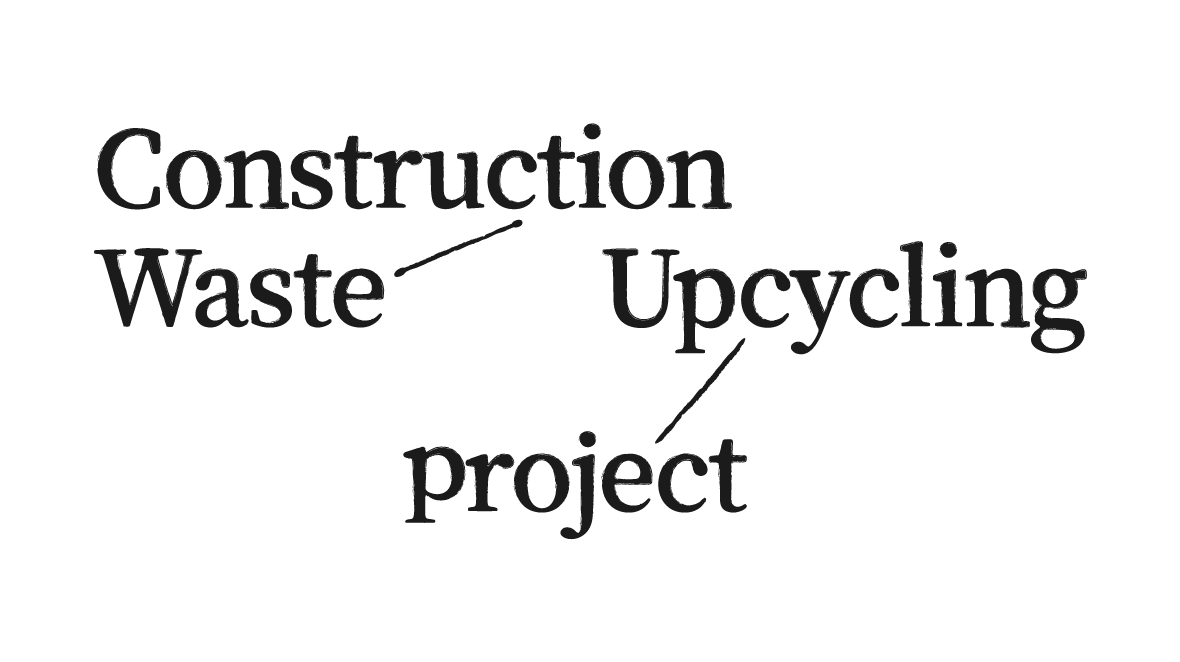Chance encounter at a forum made the construction industry’s green goals sprout
In 2023, at a sustainability forum hosted by Chung Hwa Pulp Corporation in Hualien, Professor Shuenn-ren Liou from NCKU’s Department of Architecture introduced the concept of “material flow1” to analyze the movement of waste in the pulp industry—covering waste types, processing pathways, and connections to recycling supply chains. Among the audience, the Farglory Land team’s eyes lit up: “Isn’t this the answer we’ve been searching for?”
Back in 2018, Farglory Land gathered employees from different departments to form “FG Next,” making sustainability and sharing its core values. This task force, like a green special-ops unit, had been focused on exploring recycled building materials and carbon reduction strategies. Yet the lack of systematic scientific tools meant that assessments of recycled materials and tracking of carbon emissions still relied heavily on human judgment and fragmented analyses. By coincidence, just as Farglory Land want to create a more precise inventory on how much waste its construction sites were actually producing and how to reduce it, the company crossed paths with the NCKU team and encountered the term “material flow” for the first time.
After the forum, Farglory Land reached out to Professor Liou to share its vision. Professor Liou candidly responded, “It’s not unusual for construction companies to talk about sustainability, but those willing to invest resources in building a material flow system are truly rare.” While recollecting the conversation, he was still slightly astonished.
Through Professor Liou’s introduction, the Farglory Land team met Professor Pi-cheng Chen from NCKU’s Department of Environmental Engineering. Though the two professors came from different disciplines, they were remarkably aligned in their perspectives on material flow research. Together with Farglory Land, they quickly formed a “golden triangle.”
When discussing material flow, Professor Liou offered a unique perspective, stating that “for Taiwan’s construction industry to establish a material flow system, the key lies in forming a Regional Green Alliance.” He argued that regional alliances not only ensure the operation of material flows but also drastically reduce transportation-related carbon emissions. He further identified two major strategic breakthroughs for Farglory Land:
- Circular optimization: Through smart design and precise scheduling, construction waste can be regenerated directly on-site. Waste that must be discarded can be recycled, reprocessed, and even reintroduced into the building materials market.
- Information integration: By linking environmental service providers and recycling plants, a transparent material flow ecosystem can be built.
Most importantly, it was necessary to keep experimenting and challenging, because “opportunity lies in action—without doing, you’ll never see it.”
This has always been Professor Liou’s guiding belief.

Professor Shuenn-ren Liou (Department of Architecture, NCKU)

Associate Professor Pi-cheng Chen (Department of Environmental Engineering, NCKU) explaining the material flow database
Professor Pi-cheng Chen’s task was to transform this material flow system into an applicable digital tool. He led the team in developing the “Construction Material Flow Tracking System,” enabling every future Farglory Land project site to monitor key information in real time.
Material traceability: Where did the building materials come from? How much was used?
Flow transparency: Which environmental service providers handled the waste? How was it regenerated?
Data-driven decisions: Automatically generate carbon-emission hotspot maps and reduction suggestions.
In this way, Farglory Land’s support for the circular economy is transformed into a complete digital system.
A chance meeting at a forum made collaboration inevitable.
When construction site meets chemical engineering—translating material flow
Once the collaboration began, the first challenge that arose was a difference in the “language” each side spoke . In chemical engineering, material flow refers to the input, output, and metabolic cycle of resources. But in construction, a site deals with only two categories: “incoming materials” and “waste.” Eventually, the two sides proposed a key formula:
Materials brought into the construction site (A) = materials retained at the construction site (B) + materials discarded from the construction site (C) → A = B + C

This seemingly simple equation became the basis for communication between both sides.
The harder challenge, however, came afterwards. Historically, Farglory Land classified all data under financial categories (e.g., rebar procurement costs), but material flow requires grouping by material properties (e.g., types of metals, like gold, silver, copper, or iron). The team spent several months manually filtering 3,677 cost items down to 1,466 material-related items. In the following step, AI has to be used to interpret the corresponding material flow attributes of those 1,466 items, building a comprehensive property database for construction site materials. This massive inventory effort is still ongoing.
From carbon emissions data to sustainability strategy: fostering green supply chain partners
The prototype of Farglory Land’s Construction Site Material Flow Database has been established, but the real challenge has only just begun.
It is like piecing together an invisible carbon emissions map. Once the database is complete, it can be used to gradually assemble precise sustainability strategies, such as:
- Carbon accounting: By linking various materials in the database to domestic and international carbon emission factor databases, carbon emissions for each project can be estimated in advance based on the volume of materials required. For example, if 10 tons of rebar are entered, the system automatically calculates the related emissions.
- Hotspot radar: Using carbon emissions data from the previous step, the system identifies carbon emission hotspots, highlights carbon-intensive materials such as concrete, and pinpoints key areas for reduction.
- Supply chain integration: Work with the green supply chain to develop sustainability strategies, estimate the amount of carbon reduction for each strategy, and embed recycled building material suppliers directly into the procurement process.
- Flow tracking: Take construction waste like waste cement or bricks as an example. In the past, they were simply landfilled, but with the material flow system in place, they are now divided into two streams—landfill and recycling/reuse.

Linking the green supply chain through material flow: creation of the Gabion Experiment
While waiting for the system to be refined, it is still possible to first prove the market value of recycled materials.
Thus Farglory Land and National Cheng Kung University went beyond theory and launched a small-scale experiment. They partnered with New Century Environmental, a company specializing in demolition, to align their sustainability strategies in advance and explore a long-term partnership. At New Century Environmental’s facility, waste concrete was crushed and packed into wire mesh structures to create gabions, which then served as foundational elements for a small landscape park. This small-scale trial is a microcosm of the future green recycling supply chain for the construction industry—a system in which material flows connect the three key stages of demolition, processing, and reuse.
We are still on the opening leg of this journey, but as the recycled concrete in the Gabion Experiment reliably bears weight, a belief stronger than cement itself is taking shape: sustainability has never been a cost, but rather the rule of survival for the next generation of the construction industry.

- Material flow refers to the movement and transformation of raw materials, parts, and products throughout production, supply chains, and logistics processes. It covers the entire process—from suppliers to manufacturing, production, storage, distribution, and even recycling—and is closely linked with information flow and fund flow. Material flow aims to improve efficiency, lower costs, and reduce waste through tracking and data analysis. In recent years, it has been widely applied in manufacturing, logistics, and circular economy.




